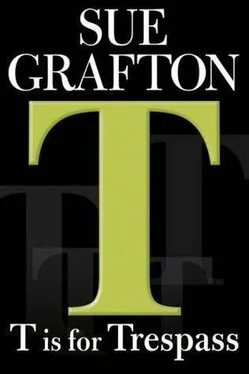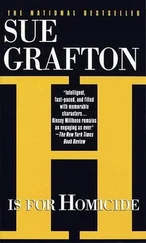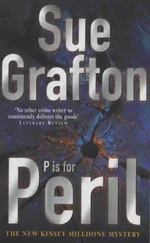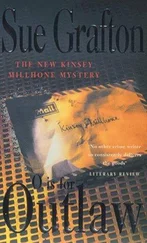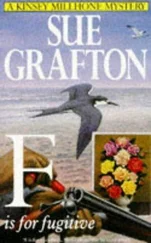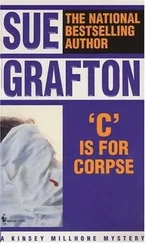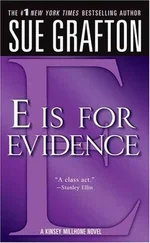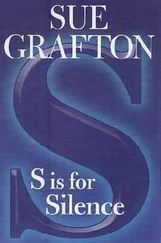By the time I’d taken this split-second detour down memory lane, I’d entered the Administration Building. The wide corridor was bright, though the character of the light streaming through the windows was cold. There were Christmas decorations here and there, and the absence of students suggested that they’d already left for the holidays. I didn’t remember the place feeling so friendly, but that was doubtless a reflection of my attitude during that period.
I went into the Admissions and Records Office and asked the woman at the desk for Mrs. Henderson.
“Mrs. Henderson’s gone home for the day. Is there something I can help you with?”
“Gee, I sure hope so,” I said. I felt the thrill of a lie leaping to my lips. “I chatted with her an hour ago and she said she’d pull some information from the student files. I’m here to pick it up.” I put Solana’s job application on the counter and pointed to her signature.
The woman frowned slightly. “I don’t know what to tell you. That doesn’t sound like Betty. She never said a word to me.”
“She didn’t? That’s too bad. As sick as she was, it probably slipped her mind. Could you check the records for me since I’m already here?”
“I suppose so, though it might take a minute. I don’t know the files as well as she does.”
“That’s fine. No hurry. I’d appreciate it.”
Seven minutes later I had the confirmation I needed. Unfortunately, I wasn’t able to coax any further information from the woman. I thought if Solana was a C-student, a prospective employer was entitled to know. As a friend of mine used to say, “On an airplane, you better hope your bomb-sniffing dog didn’t graduate at the bottom of his class.”
I returned to my car and pulled out my Thomas Guide covering Santa Teresa and San Luis Obispo counties. I had the address of the nursing home where Solana had last worked, which turned out to be walking distance from my office.
Sunrise House was a combination convalescent hospital and assisted-living facility, with room for fifty-two residents, some temporary and some permanent. The building itself was a one-story frame structure, with a number of additions laid nose-to-nose, in vertical and horizontal wings as random as a Scrabble board. The interior was tasteful, the decor done in shades of green and gray that were soothing without being apologetic. The Christmas tree here was also fake, but it was a thickly flocked specimen with tiny lights and silver ornaments in place. Eight large handsomely wrapped presents had been arranged on a white felt tree skirt. I knew the boxes were empty, but their very presence suggested wonderful surprises to come.
A large antique desk occupied the place of honor in the middle of an Oriental carpet. The receptionist was in her sixties, handsome, pleasant, and eager to be of help. She probably thought I had an aging parent in need of accommodations.
When I asked to speak to the head of personnel, she led me through a maze of corridors to the assistant administrator’s office. Over her shoulder, she said, “We don’t have a personnel department per se, but Mrs. Eckstrom can help you.”
“Thanks.”
Eloise Eckstrom was roughly my age, late thirties, very tall and thin, with glasses and a full head of bright red hair. She wore a vibrant green twin set, a plaid wool skirt, and flats. I’d caught her with her desk in disarray, drawers emptied and the contents arranged on chair seats and tabletops. An assortment of wire baskets and drawer dividers was packed in a box nearby. On the credenza behind her she had five framed photographs of a wire-haired terrier in various stages of maturity.
We shook hands across her desk, but only after she wiped her fingers clean with a moist towelette. She said, “Sorry the place is such a mess. I’ve been here a month and I swore I’d get organized before the holidays. Have a seat, if you can find one.”
I had a choice between two chairs, both of which were stacked with file folders and back issues of geriatric journals.
“That stuff will probably end up in the trash. You can put it on the floor.”
I shifted the weight of magazines from the seat to the floor and sat down. She seemed relieved to have the chance to sit as well.
“What can I help you with?”
I laid Solana Rojas’s application on the only bare spot I could find. “I’m hoping to verify some information about a former employee. She’s been hired to look after an elderly gentleman, whose niece lives in New York. I guess you’d call this ‘due diligence.’”
“Of course.”
Eloise crossed the room to a bank of gray metal file cabinets and opened a drawer. She pulled Solana Rojas’s personnel file, leafing through the pages as she returned to her desk. “I don’t have much. According to this, she came to work for us in March of 1985. Her job evaluations were excellent. In fact, in May of that year, she was Employee of the Month. There were no complaints and she was never written up. That’s the best I can do.”
“Why did she leave?”
She glanced back down at the file. “She apparently decided to go to graduate school. Must not have suited her if she’s already applying for private-duty work.”
“Is there anyone here who knew her? I was hoping for someone who’d worked with her on a day-to-day basis. The guy she’ll be caring for is a contrarian, and his niece wants someone with patience and tact.”
“I understand,” she said, and checked Solana’s file again. “It looks like she worked on One West, the post-surgery floor. Maybe we can find you someone who knows or remembers her.”
“That would be great.”
I followed her down the hall, not entirely optimistic about my chances. In doing a background check, fishing for personal data can be a tricky proposition. If you’re talking to a friend of the subject’s, you have to get a feel for the nature of the relationship. If the two are close buddies or confidantes, there’s probably a treasure trove of intimate information, but your chances of retrieving it are dim. By definition, good friends are loyal and, therefore, quizzing them on the down-and-dirty details about a pal seldom yields much of use. On the other hand, if you’re talking to a work mate or casual acquaintance, you have a better shot at the truth. Who, after all, can resist the invitation to trash someone else? An interpersonal rivalry can be exploited for potential bombshells. Bad blood, including overt conflicts, jealousies, petty grievances, or an inequity in pay or social status, can produce unexpected riches. For maximum success in prying, what you need is time and privacy so the person you’re talking to will feel free to blab to her heart’s content. The post-surgery floor wasn’t likely to yield the proper atmosphere.
Here I encountered a tiny stroke of luck.
Lana Sherman, the LVN who’d worked with Solana for the better part of a year, was just leaving the nurse’s station for a coffee break and she suggested I tag along.
On our way down the hall to the staff lounge, I asked her a few questions, trying to get a feel for the kind of person she was. She told me she was born and raised in Santa Teresa, that she’d been at Sunrise House for three years, and she liked it okay. “Effusive” was not an adjective I’d have been tempted to apply. Her dark hair was thin, with layers of drooping ringlets that looked dispirited. Already I wanted her to fire her “stylist” and try someone new. Her eyes were dark and the whites were bloodshot, as though she were trying her first contact lenses without much success.
The staff lounge was small but attractively furnished. There was a table with chairs drawn up to it, a modern couch, and two upholstered love seats arranged around a coffee table. A microwave oven, a toaster, a toaster oven, and a coffeemaker sat on the counter. The refrigerator was decorated with stern warnings about the sanctity of other employees’ food. I took a seat at the table while Lana poured coffee in a mug and added two packs of Cremora and two of Sweet ’N Low. “You want coffee?”
Читать дальше
